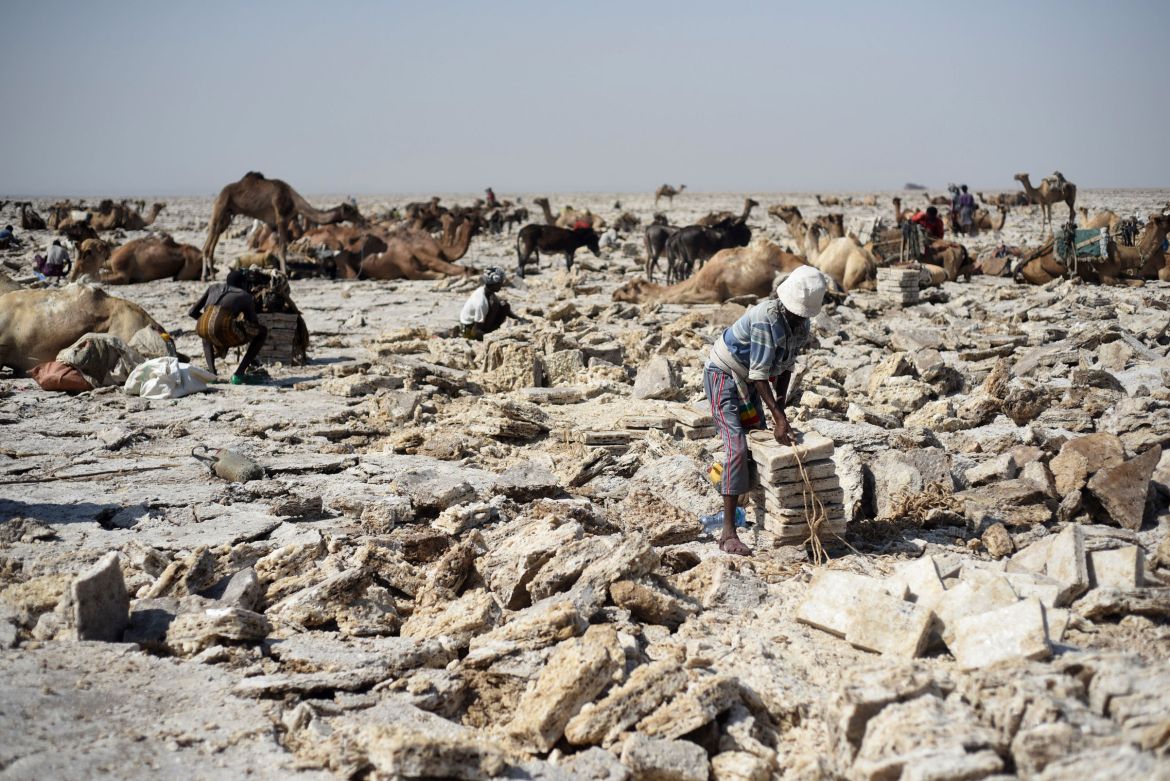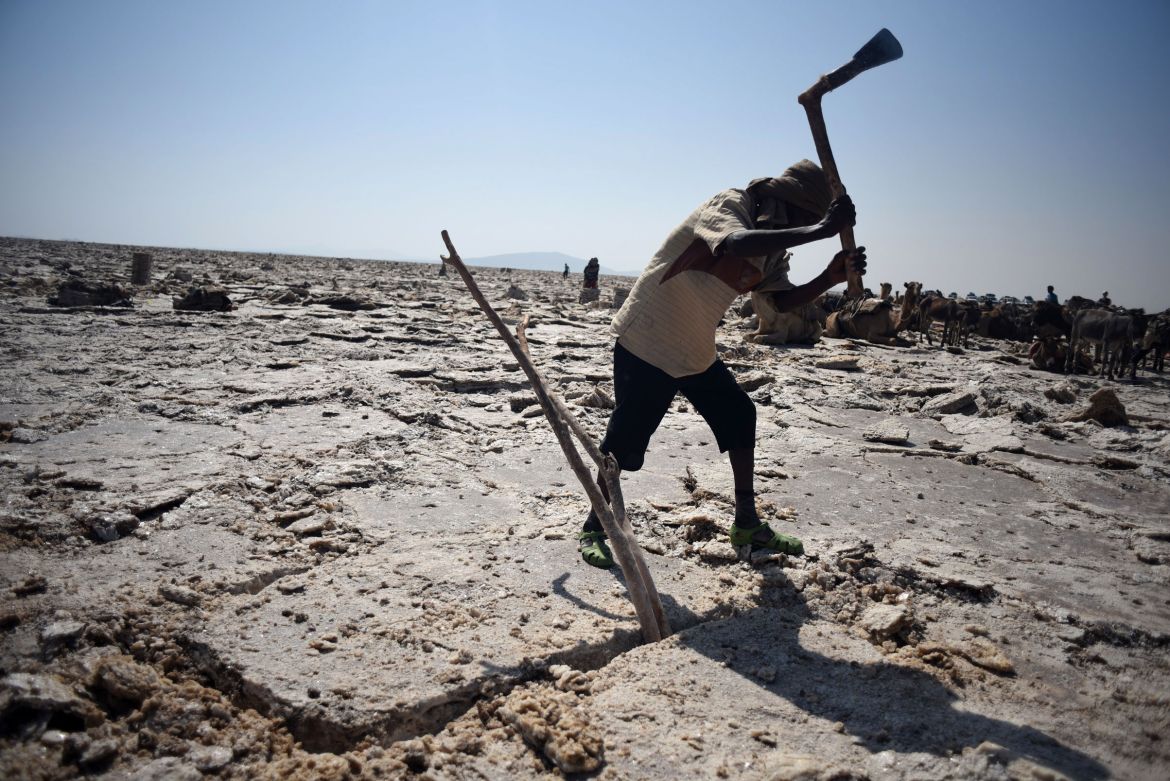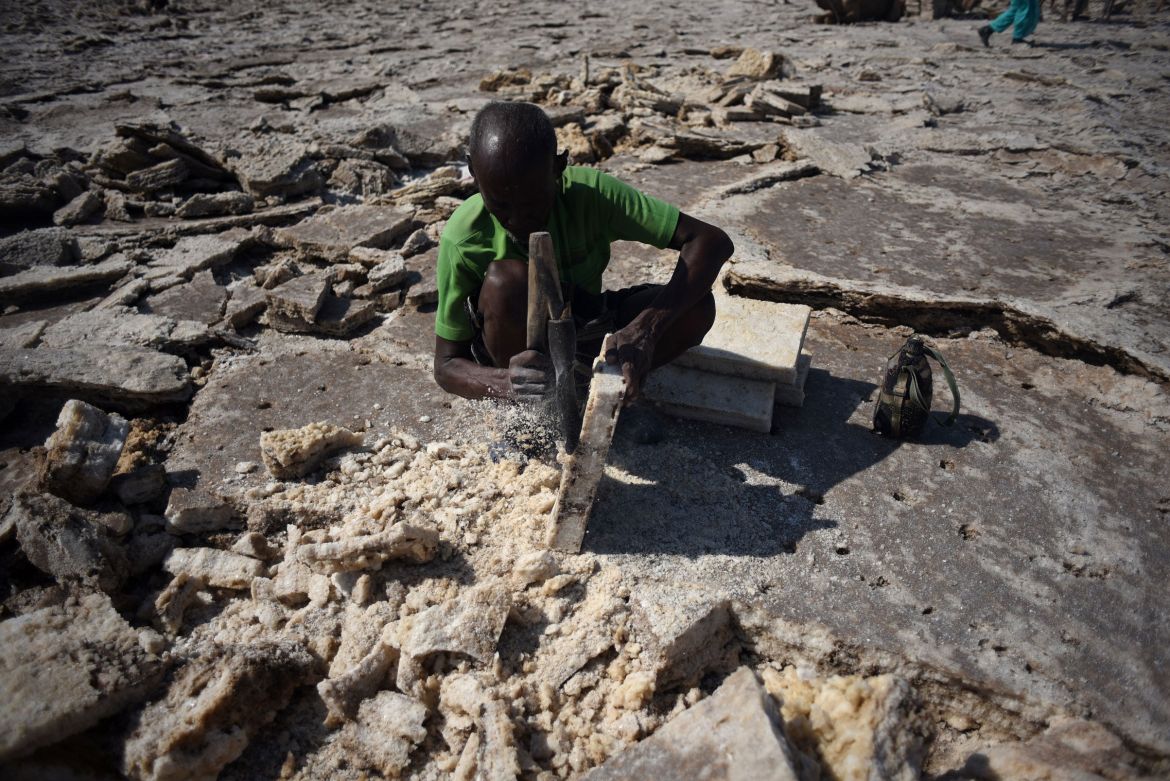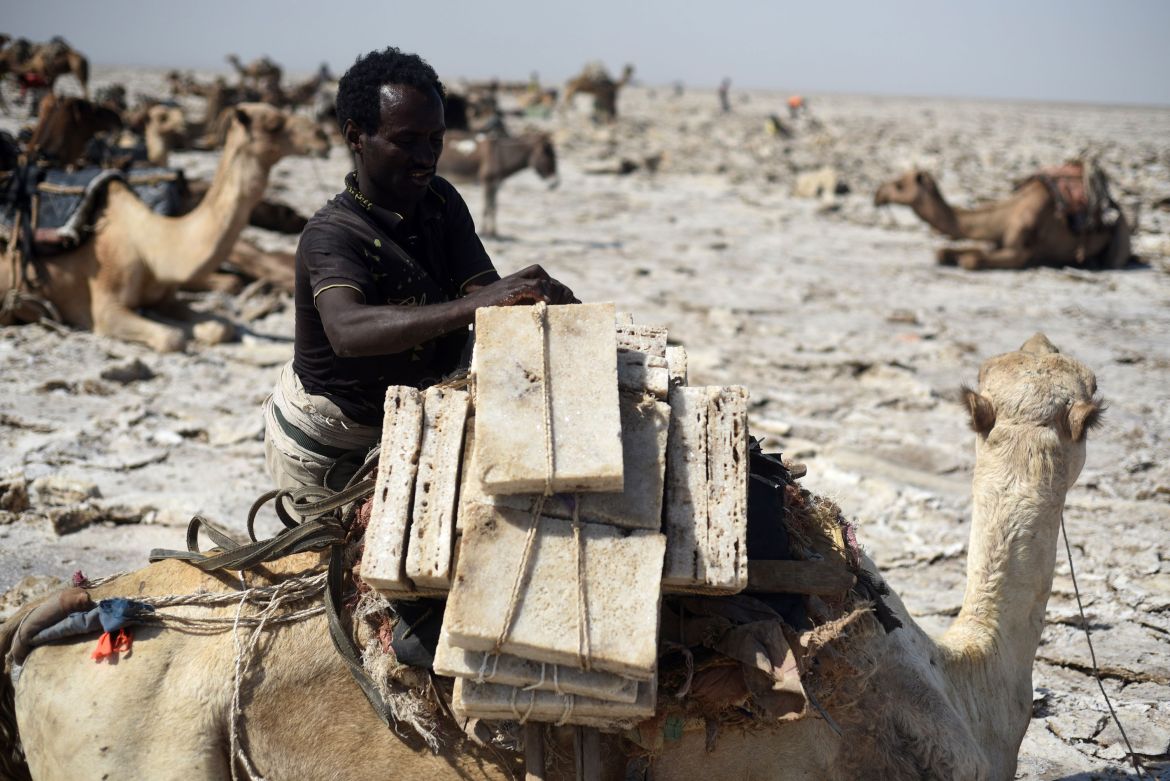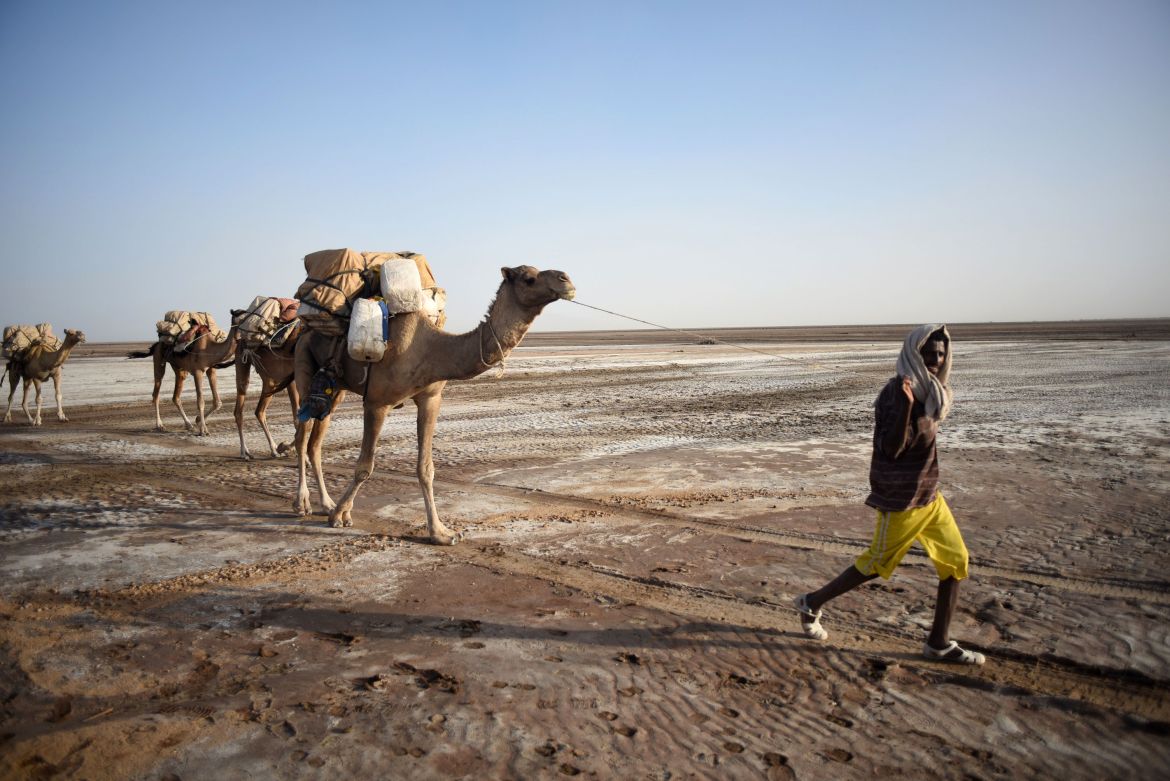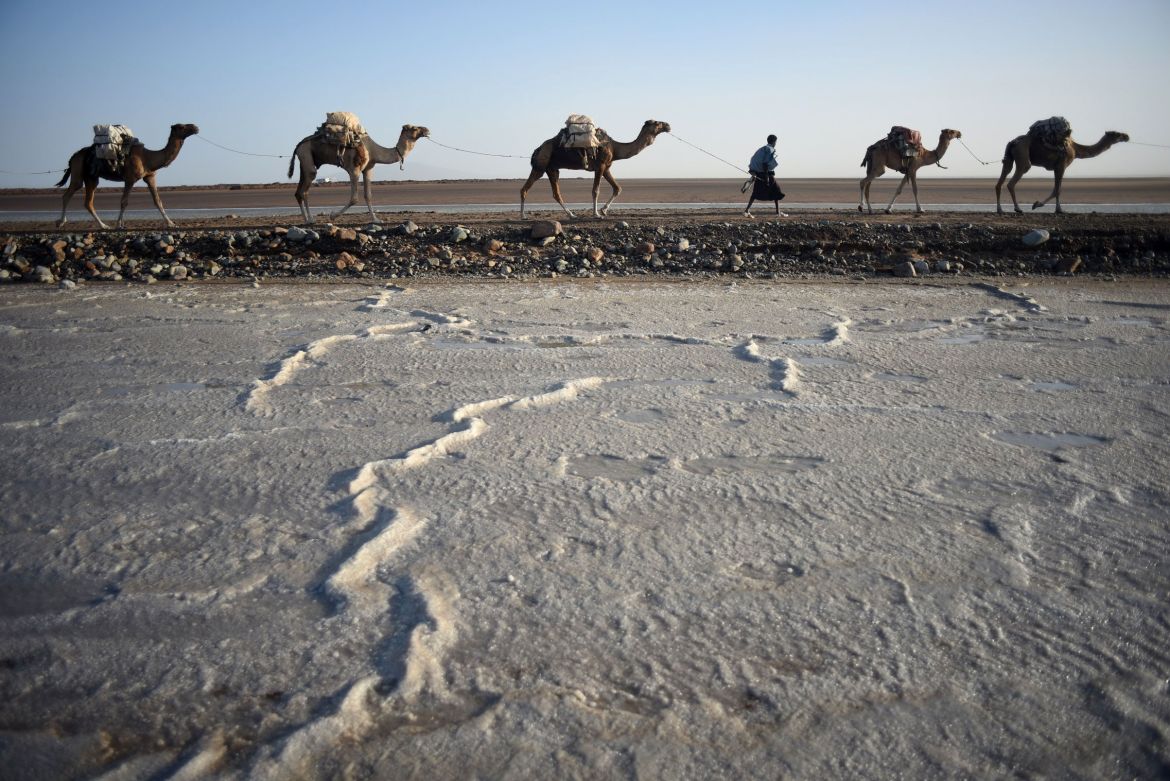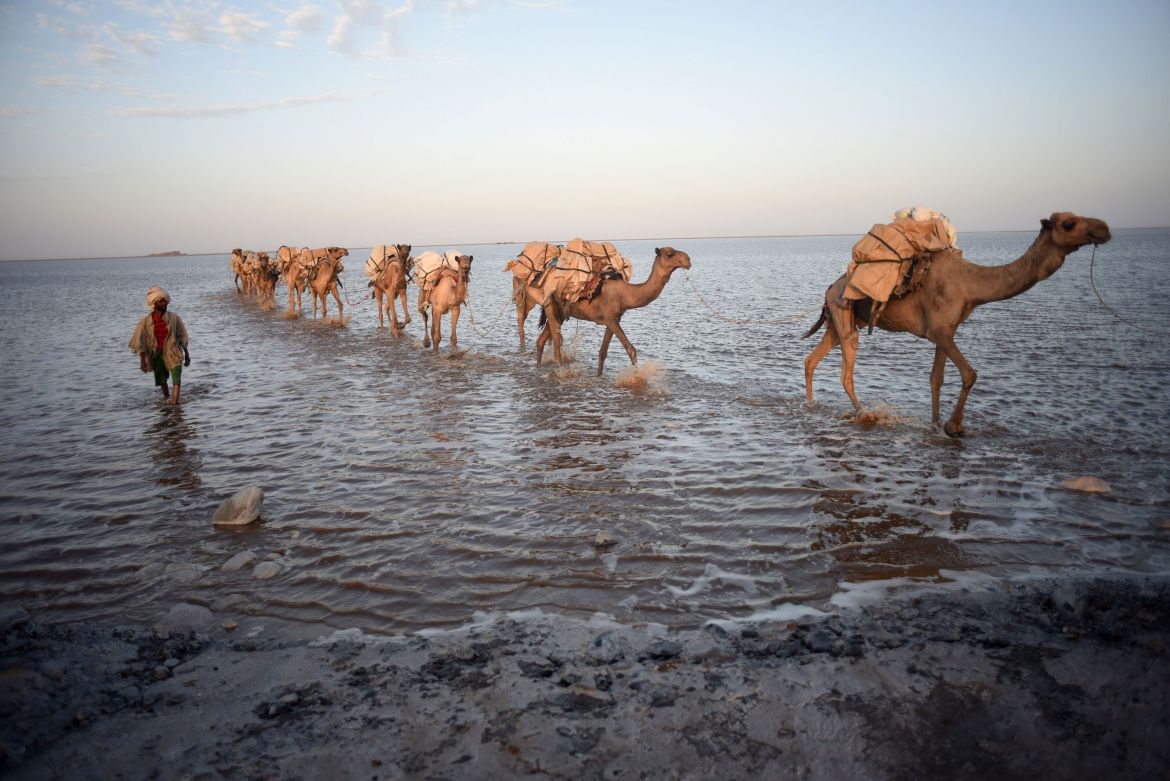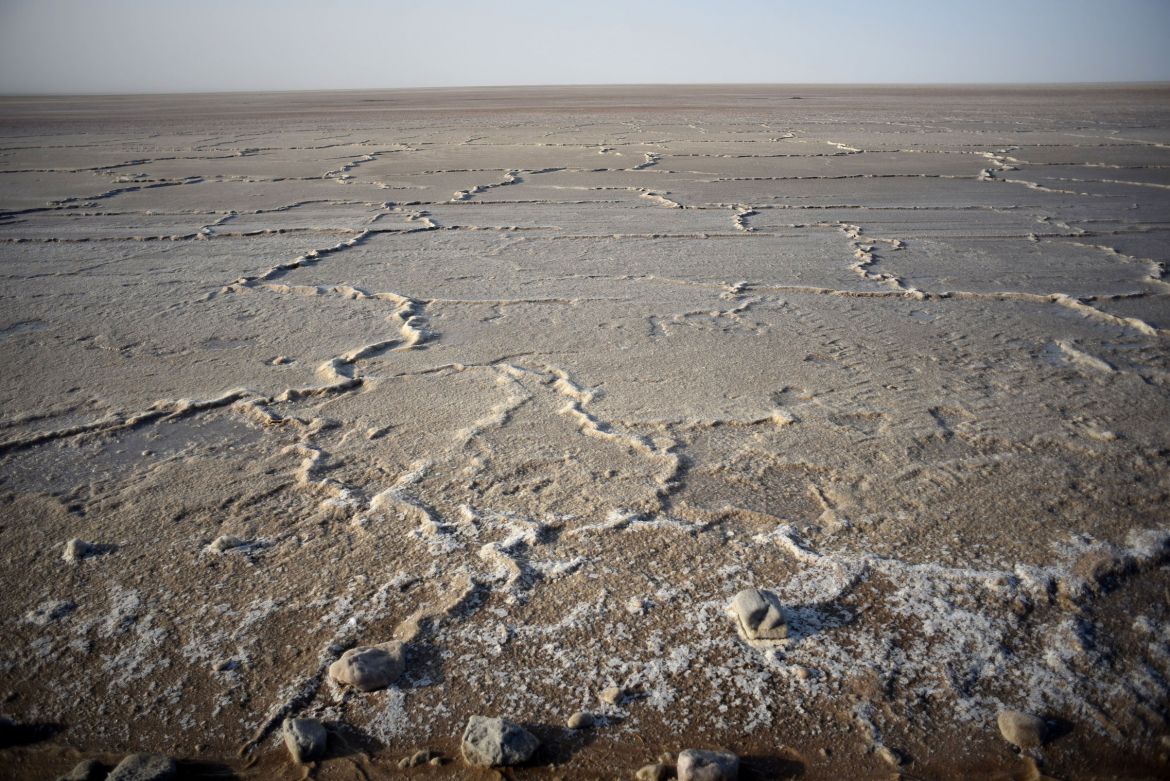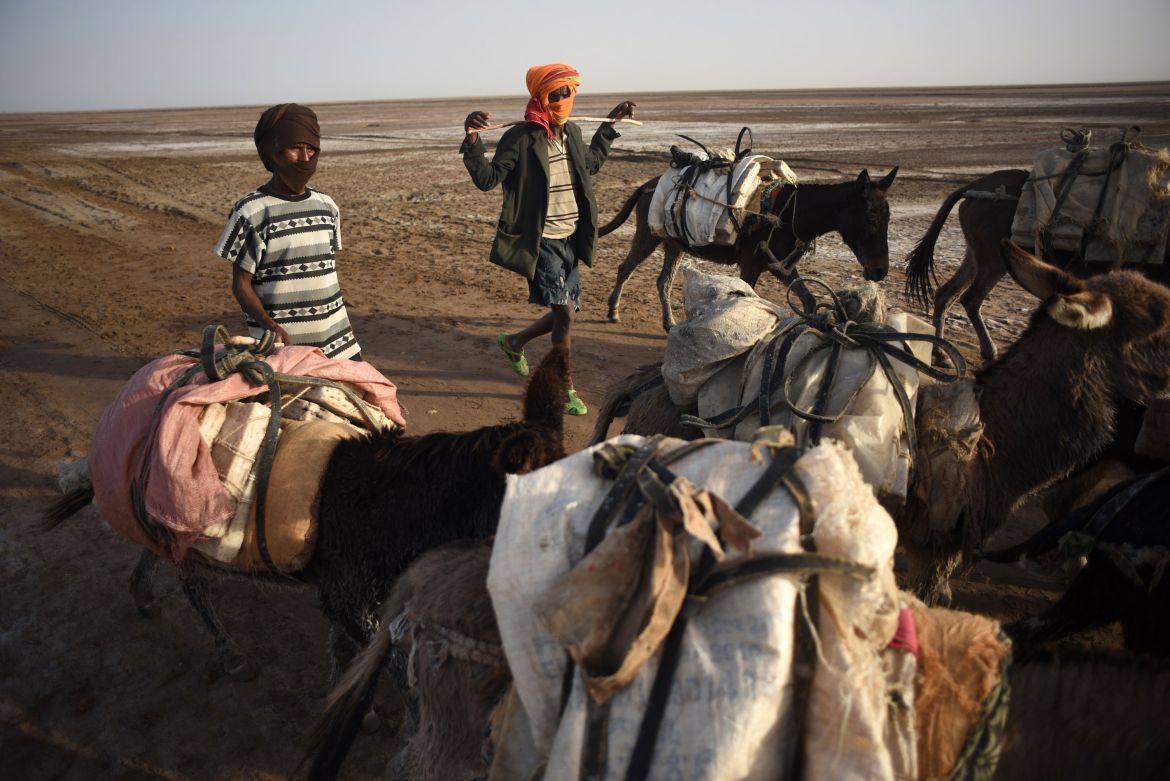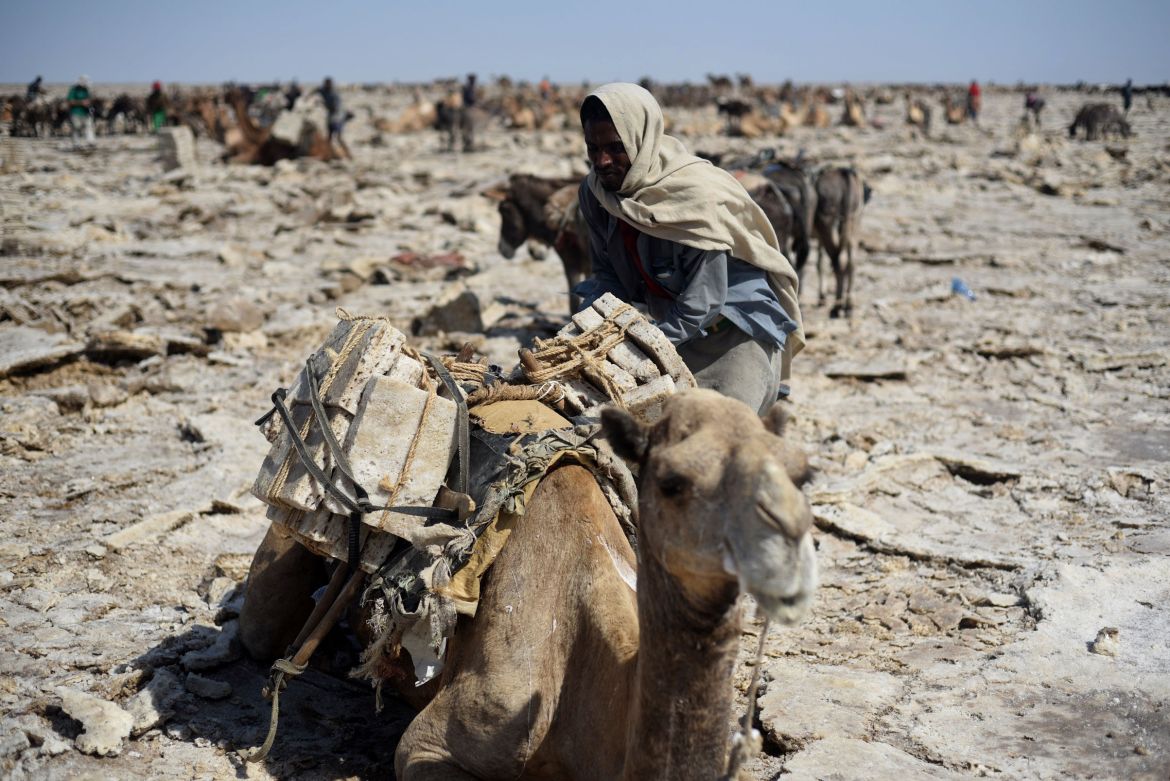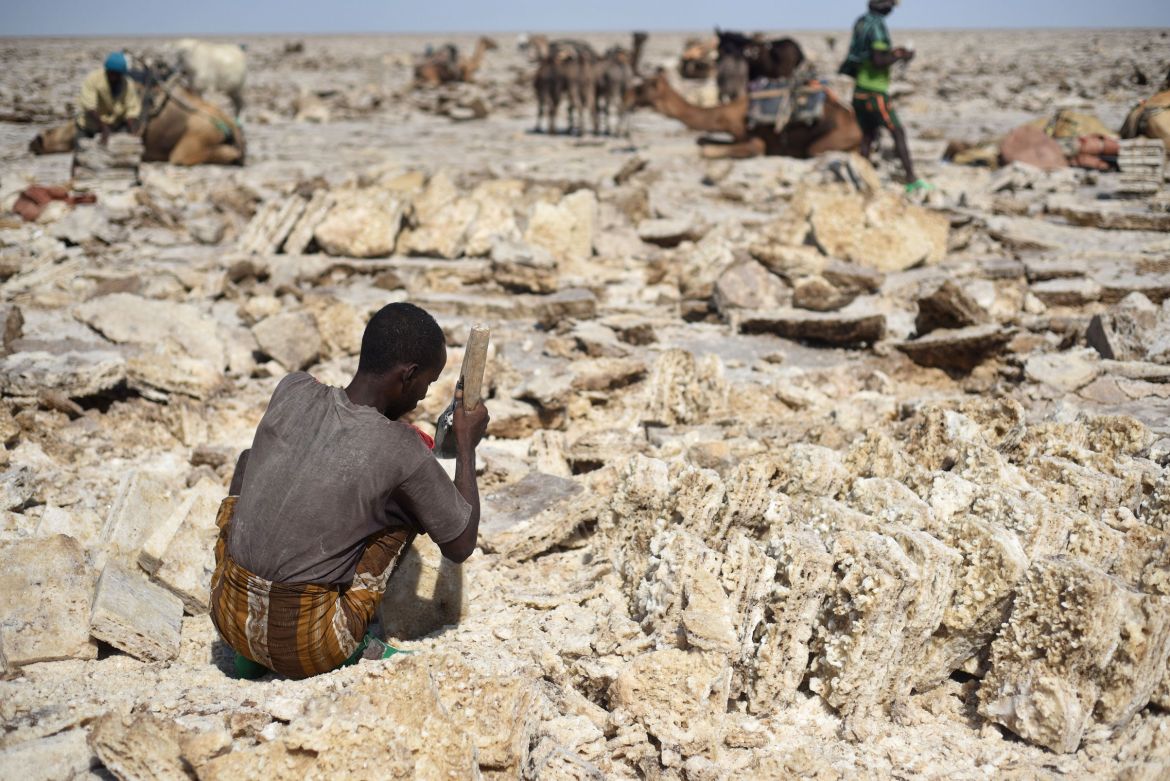In Pictures
Endangered camel caravans of the Ethiopian salt mines
Arrival of big companies and technology advances, threaten ancient livelihood at Ethiopia’s dried, salty inland seabed.
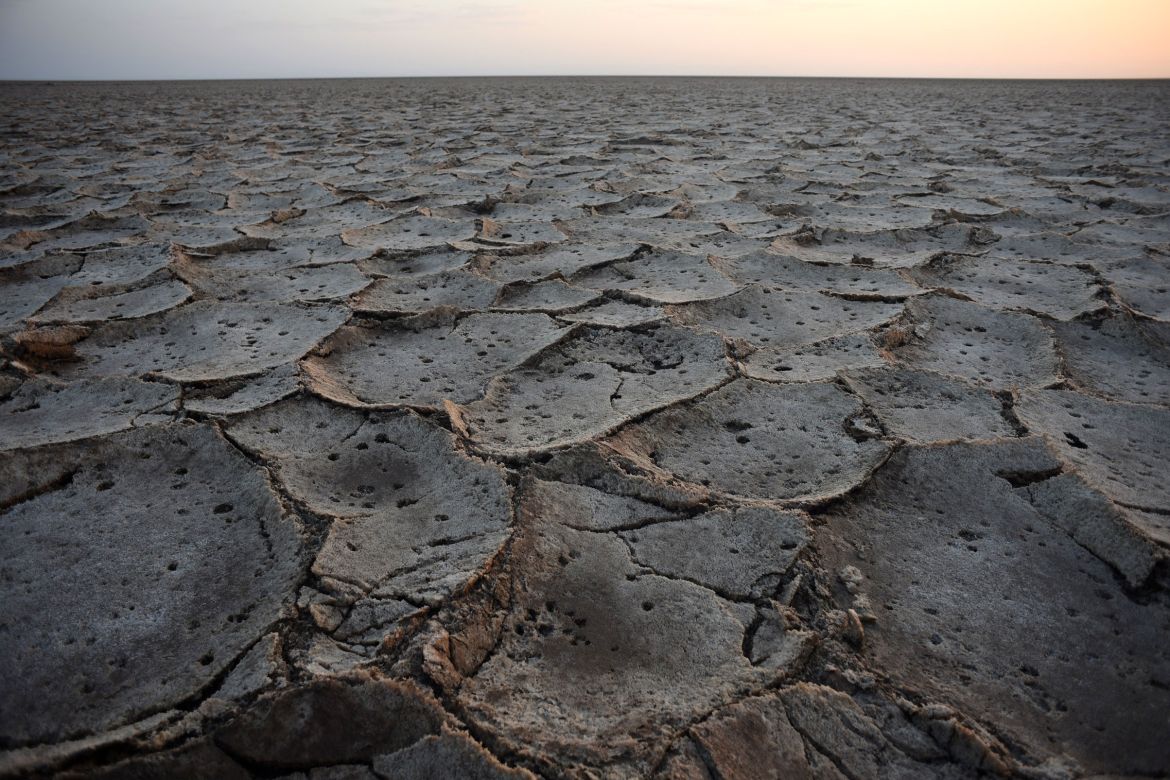
Danakil, Ethiopia – Salt miners ply an ancient and gruelling trade in Ethiopia’s northeastern Danakil Depression, one of the hottest and lowest places on Earth.
Danakil contains vast salt flats as well as sulphur springs and rumbling volcanoes created by the grinding of three tectonic plates. Yet this inhospitable landscape manages to support the Afar people, a Muslim group straddling the borderlands of Ethiopia, Eritrea, and Djibouti.
Each day, Afar miners chop salt from the earth under a blistering sun, then load the minerals on to camels and donkeys which march for days to market towns to the west where the mineral is sold.
Danakil salt was once so valuable people used it as currency, but each rough hewn slab fetches only four Ethiopian birr (about 20 cents) at the mine today. With such small profits for such hard labour, the ancient trade may soon give way to more lucrative pursuits.
The Danakil also holds large deposits of potash which is used in fertilisers, and numerous mining companies are lining up to begin extraction.
READ MORE: Ethiopia’s tourism industry
A railway being built from Djibouti and a new tarmacked road traversing the old salt route may soon render the traditional camel caravan obsolete. Until then, the Afar miners will continue their tough way of life, scratching a living from this desolate stretch of salt.
